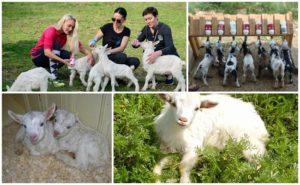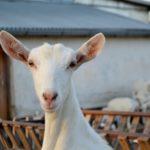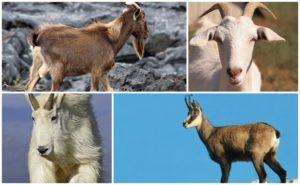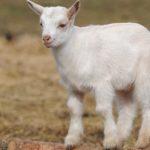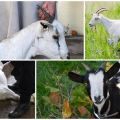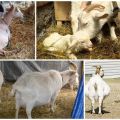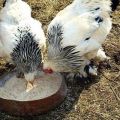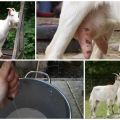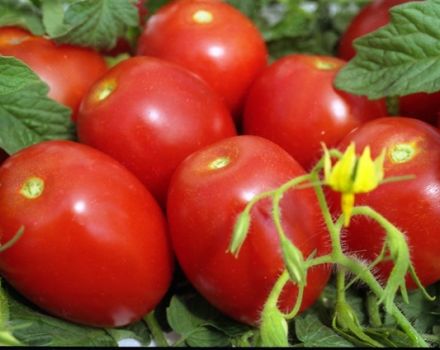How to feed a goat in winter in addition to hay, making a diet at home
In the summer, the grazing goat independently regulates the mistakes of the goat breeder in feeding, but in the winter in the stall the animal needs proper care and a suitable diet. Even experienced farmers do not always know what is recommended to feed a goat in winter, although there is nothing difficult about it. In order for the animal to receive the necessary vitamins, it is important to know which foods are suitable for the goats and how to combine them with each other.
Diet of a goat in winter
Nutrition in winter goats should be combined. To ensure that the animal gets the right amount of nutrients and vitamins from food, experienced farmers feed their livestock according to the principle: in the morning they give dry coarse feed, and in the afternoon - concentrates, organic matter and a lot of hay.
It is important to monitor the purity and quality of the products that the animal will consume. Root vegetables such as carrots and beets must be free of contamination. The hay must be dried in the right way to retain its mineral components.
Roughage
In addition to hay and straw, which are best given to goats after dinner, the animal needs to eat rough food - twigs, sticks, needles. If it is not possible to take goats out into the forest so that they can feast on the branches of trees and shrubs, you can prepare branch brooms at home. For brooms, you can cut branches from any trees and dry them under a canopy.
The most suitable trees for making brooms:
- Linden;
- Birch;
- oak;
- maple;
- aspen;
- Rowan.

In the fall, workpieces should be stored in a dry place such as the attic. A goat needs 500 g of branch feed per day.
Juicy feed
Feed the goat daily with silage, fresh vegetables and roots. The daily rate of juicy food per adult is 2-3 kilograms. The role of such feeding is important for maintaining health and increased milk production in females. Nutrient silage is made from:
- tops;
- mixtures of legumes and cereals;
- corn kernels of waxy ripeness;
- soybeans;
- sweet clover;
- alfalfa.

Juicy feed includes boiled potatoes, which can be mixed with crushed cereals. It is advisable to add a teaspoon of salt and ground chalk to a mixture of boiled potatoes with grains.
Concentrates
It is important to introduce concentrated feed into the goat's diet so that the animal receives the right amount of vitamins and minerals throughout the winter. Concentrates contain a lot of proteins, fats, carbohydrates. These beneficial compounds can be impregnated with hay and straw. Concentrated formulations are of several types:
- carbohydrate, consisting of cereals;
- protein, made from beans and soy;
- fatty, high in protein, such as rapeseed oil;
- powdered milk;
- food organic waste;
- fish bone meal;
- compound feed.
Features of feeding the animal at home
The goats should be fed daily with tops. 3-4 kilograms of tops per day is enough for one head. This food usually contains cabbage leaves, sugar beets, carrots. Chalk is added to the tops to neutralize the acidity of vegetables. Every day one adult eats 500-600 grams of hay or straw.
During pregnancy
In order for the future offspring to be born healthy, a pregnant goat needs to give a little less root crops than usual. An excess of vegetables and roots can affect the development of the kids in the womb, and they will be edematous. In this case, childbirth will be difficult, and the offspring will be born weak.
| The daily diet of a pregnant goat in winter | Feeding schedule |
| In the morning: 200 g of grain and 600 g of tops with root vegetables | 7 to 8 am |
| Feed 2 kg of hay or straw in the afternoon | 12-13 days |
| For an afternoon snack, give grains, cereals and cake in a total amount of 400 g | 16 to 17 in the evening |
| In the evening, spread the hay in the feeders before bedtime. | After 18-19 pm |

The hay in the feeding trough of the pregnant female should be open to her. When she completely eats it, then add another portion. During pregnancy, goats happily eat brooms. You can give some needles along with the branches.
Milking goat
In order for the female to have a long lactation period, it is important to introduce more protein products into her diet. The winter diet must contain concentrates with a high content of legumes and soybeans. In order for the goat to produce more milk, it needs to eat juicy food regularly. Silage and root crops should be given to dairy females more than dry feed.
On average, a female needs 2 kilograms of root crops per day. Grains should be given less, up to 1 kilogram daily.
Feeding kids
Newborns usually feed on breast milk and colostrum. If for some reason it is impossible to provide the kid with natural nutrition, then it is better to transfer it to a mixture of pasteurized goat milk. Coarse feed is contraindicated for kids at an early age due to the fact that their digestive system cannot digest hay, branches or cereals. When newborns are 11 days old, you can gradually transfer them to porridge.
21 days after birth, the kid is able to eat adult food. He can be given grated apples and juicy feed. The dose of milk in the kid's diet should be gradually reduced. Instead of milk, the animal is given top dressing, chalk, salt and bone meal. At two months of age, the diet of a kid may be no different from that of an adult. The only difference is the size of the portions.
What should you not feed your goat?
It is important to monitor the animal's diet and not give it monotonous food, for example, only silage and hay or grain with beans. The transition to winter food should be smooth. Hay can be given every morning, and only then allowed to graze. This is necessary for the goat to wean off the fresh grass without stress. She shouldn't be forced to eat hay if she doesn't like it. The workpiece must be checked for rot or parasites.
When feeding, it is important to maintain a balance so as not to overfeed animals with the same products. Despite the fact that concentrates are useful, it is not always worth using them as feed, as this can provoke the appearance of urolithiasis in the goat. Goats are unpretentious animals, and different foods are suitable for them.The main task of the goat breeder is to monitor the quality of the products and feed them to livestock in the right proportions.
